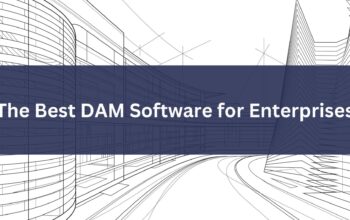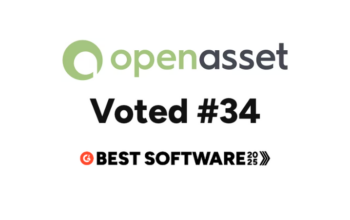Cloud-sync products, such as Dropbox and Box, let you organize and store digital files or assets and even share them with others in your organization. But if your company is like many firms, including the AEC firms we interviewed, you have an image asset library sized well over 20K assets. And your firm is adding many more images every year.
In these cases, a cloud-sync product is just not up for that big of a task. In fact, using a solution like Dropbox or Box when you have thousands of images that you need to share across an organization can end up causing a lot of frustration and wasted time.
A digital asset management (DAM) solution, however, offers several advantages over cloud-sync solutions that can lead to significant efficiency and productivity improvements around the way your firm handles its digital assets.
The way we see it, the top five advantage of DAM over cloud-sync are:
 |
1) DAM takes the guesswork out of digital asset storage and organization |
Unlike cloud-sync, locating files in DAM is visual, allowing users to preview images, files and videos without having to download them first. DAM also offers much more intuitive organization than a cloud-sync solution. This is because with DAM, digital assets can be added by multiple users and everyone is able to find those assets immediately, no permission setting necessary, unless otherwise stated.
DAM is set up with a logical structure and intuitive categories for organizing assets and making them easier to find. For example, OpenAsset uses project folders to organize images around projects, which makes great sense for project-focused AEC firms. With cloud-sync products, however, the folder structure is pretty much up to the discretion of the individual who created it, and that can make it a bit more challenging for other people to find or know where to upload what they need.
 |
2) DAM offers auto-tagging and metadata for greater search-ability |
OpenAsset, when an asset is added to a project folder, that asset is automatically tagged with all the descriptors associated with that project. In addition to saving a ton of time, this further improves the process of searching for and finding images. What’s more, assets are associated with much greater detail, including project numbers, locations, and a description of what’s in the image, all of which are searchable. And soon, OpenAsset will be able to tag-assist images for you with image recognition. Learn more about what Artificial Intelligence means for OpenAsset users here.
With cloud-sync solutions, you can add names to folders. But you can’t do any real tagging without a lot of extra effort and add-ons. Essentially, with a cloud-sync product, you pretty much need to know where to look to find images. But with DAM, the system is designed to help you quickly sort through a sea of assets to find exactly what you need, along with all the project details associated with the asset.
 |
3) DAM integrates with the rest of your technology stack |
DAM solutions work hand-in-hand with the other systems you use, including your ERP and CRM. For example, OpenAsset, features a connector to your ERP, such as Deltek Vision, to fully integrate the two technologies, automatically bringing in project data from your ERP and linking project images to project information.
OpenAsset also connects with your CRM. This enables you to pair client details with the assets in your DAM and to push content and assets into your CRM for instant access without the need for constantly moving, downloading, uploading, and saving new versions of files. With a cloud-sync product, all of this data entry and moving of files would need to be done manually.
A DAM solution like OpenAsset is also built specifically to work with products like InDesign and PowerPoint. This saves valuable time by allowing users to drag and drop the original images into templates and presentations where they are automatically resized for you. There’s no need to create and save another version of the original file every time a user needs to use it for a different purpose, which is one of the major drawbacks of a cloud-sync product. With cloud-sync solutions, you have to do the resizing yourself and save a separate file for every different size you need.
 |
4) DAM is designed for sharing assets |
With a cloud-sync product, you can only give individual permissions to users for each file or folder you want them to be able to access, and giving these permissions can get confusing. But with DAM, you can create permissions and restrictions around individual assets as needed. When an image or asset is uploaded to DAM, it’s automatically searchable and accessible to users based on the permissions that have been set-up. The primary purpose is to make your digital assets easily available and accessible to those who need to use them.
 |
5) DAM should come with user support |
With a cloud-sync product, you’re on your own when it comes to setting up and using your system. But with Open Asset, you will get support and service for onboarding and data migration as well as with any troubleshooting or problem solving along the way.
At OpenAsset, we work with clients to set up a structure that promotes asset find-ability and usability, and we help make the process of moving or migrating files and integrating with other systems painless. From there, our support team provides ongoing assistance and recommendations for how to make the most of OpenAsset and get the greatest value from the system.





